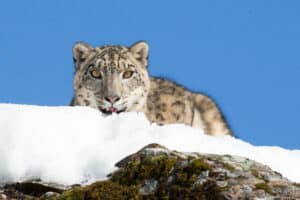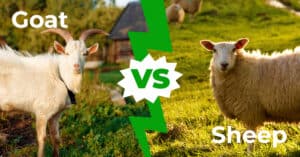It’s no secret that goats make popular livestock animals as well as endearing pets. Not only are they prolific producers of milk, but their rectangular irises and flowing beards give them a wise, arcane, intelligent look. But did you know that goat beards also influenced images of a certain Greek god? And that male goats do something disgusting to their facial hair to attract females? Read on to discover 10 surprising facts about goat beards!
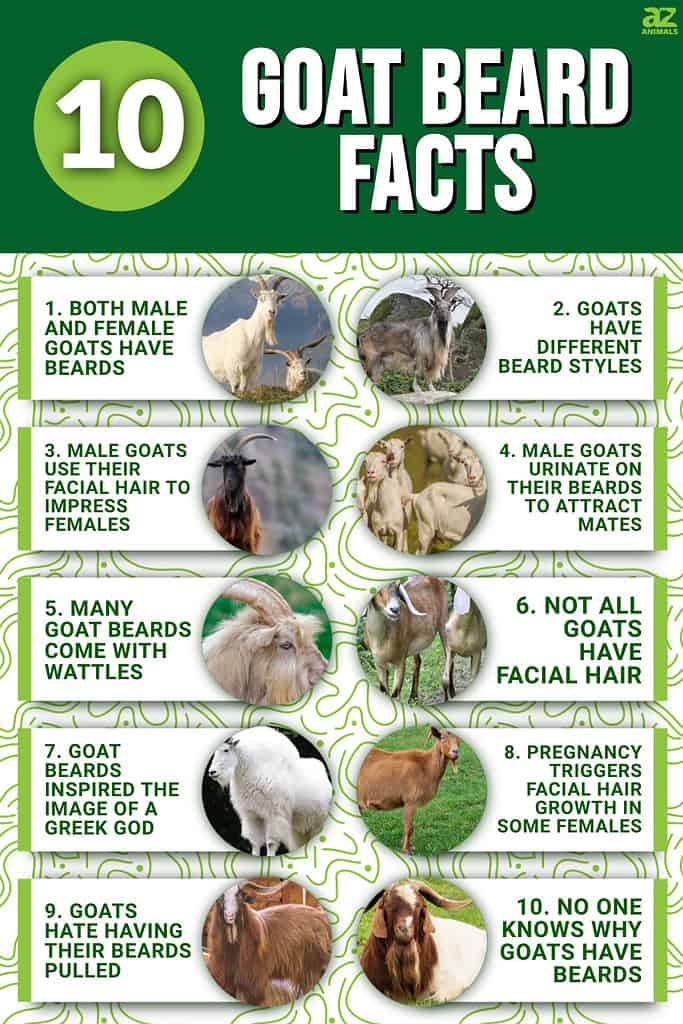
1. Both Male and Female Goats Have Beards

Both male and female goats grow beards, though not all individuals do so.
©MC MEDIASTUDIO/Shutterstock.com
Surprisingly, beards aren’t just the domain of male goats. Females also frequently grow facial hair depending on the breed. For that reason, it’s not a reliable indicator of sex. That said, the beards of females tend to be shorter and thinner than those of males. The classic goatee, so prized by human males, is a common look among does.
Goat beards take on the colouration of the individual goat and can be white, grey, brown, reddish, or black. Many growths mix colours or shades and can look quite stunning. They also come in a variety of textures, lengths, and thicknesses.
2. Goats Have Different Beard Styles
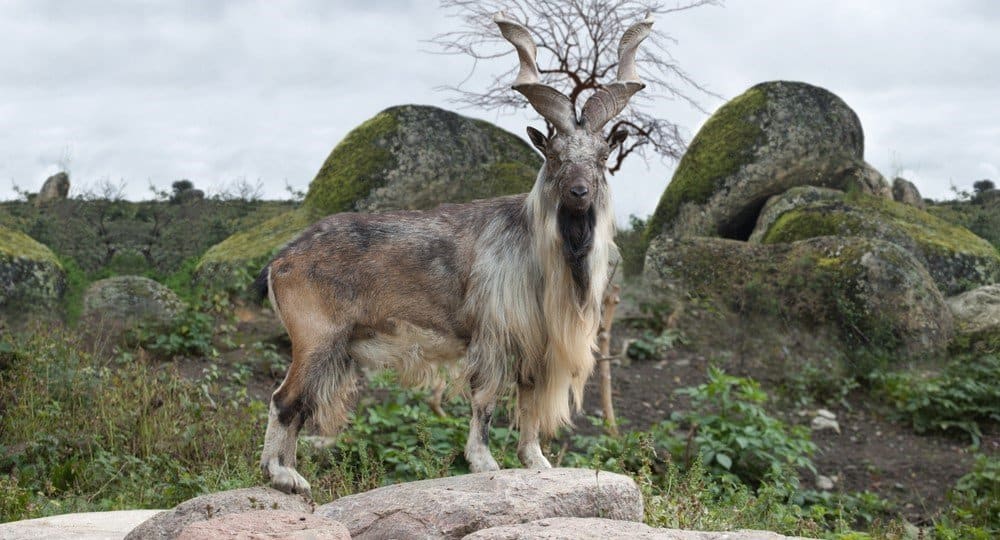
Goat beards vary in style and length. The Markhor goat is famous for its majestic facial hair.
©Igor Boldyrev/Shutterstock.com
Goat beards vary in appearance according to breed and individual. Different styles include:
- Full or bushy
- Long and silky
- Tufted
- Scruffy
- Goatees
Goat breeds with particularly majestic facial hair include the famous Markhor goat. Because of its abundant cream and white flowers, scientists have even dubbed the Aruncus dioicus plant “goat’s beard” or “buck’s beard.”
3. Male Goats Use Their Facial Hair to Impress Females
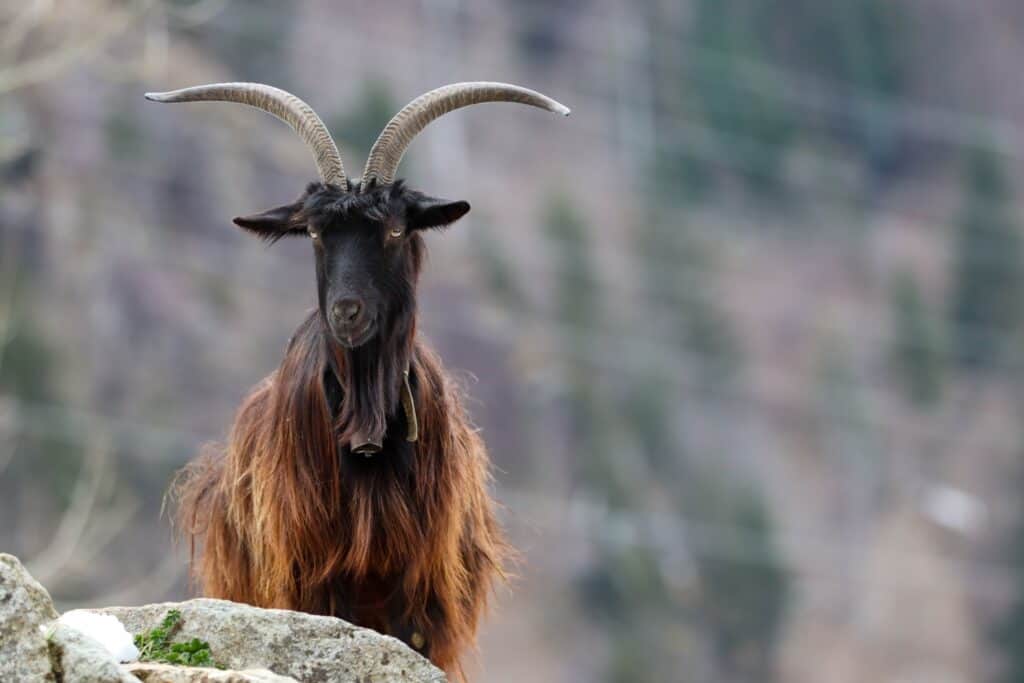
Male goats use their beards to attract females the way a peacock does its feathers or a moose its antlers.
©Silvia Ripamonti/Shutterstock.com
Just like human males, male goats use their beards to impress the ladies. For goats, beards are similar to flamboyant peacock tails or magnificent moose antlers. Thicker, larger, or more vibrant displays of feathers, fur, and horns in the animal kingdom typically win more mates. This kind of display ensures male goats will be able to pass their genes on to subsequent generations.
But male goats don’t just rely on their beards being naturally attractive. They also groom them to make them look better! Goats lick their beards to keep them clean and “combed” to entice females. And female goats go for it! Bucks with bigger and cleaner beards tend to mate more often than other bucks.
4. Male Goats Urinate On Their Beards to Attract Mates
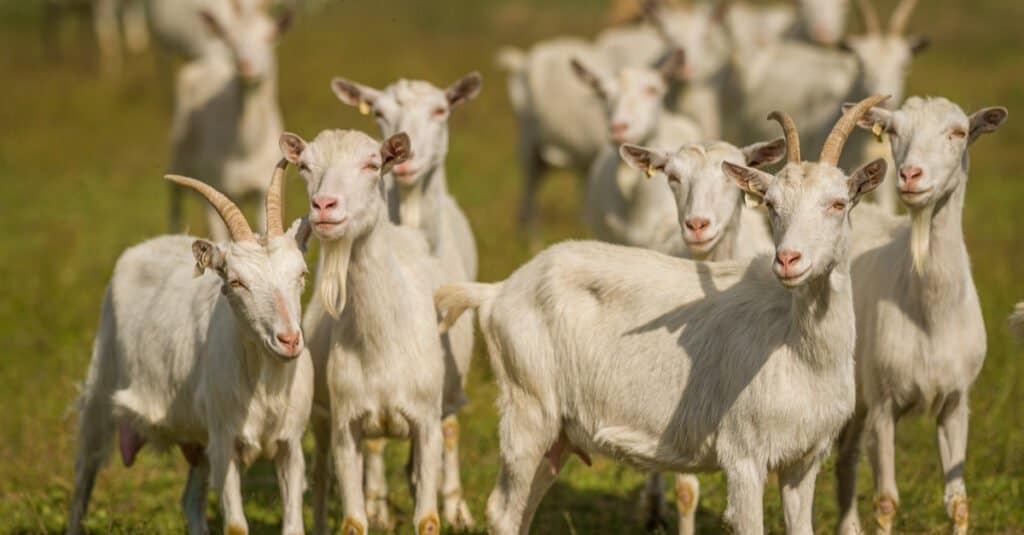
During mating season, male goats urinate on their beards, chests, and front legs to attract females.
©goodbishop/Shutterstock.com
Unfortunately, bucks don’t stop at licking their facial hair. Male goats have the disgusting habit of urinating on their beards, chests, and front legs during mating season. Ironically, this is also done to attract females, and it works at least as well as the licking. Males’ sex glands produce pheromones designed to draw prospective mates; these hormones give the bucks’ urine a specific, extremely pungent odour.
This behaviour usually takes place from late summer through fall. Goat owners are all too familiar with the repulsive stench that signals bucks desperately trying to attract does. Thankfully, only male goats do this, and they don’t do it all the time.
5. Many Goat Beards Come with Wattles
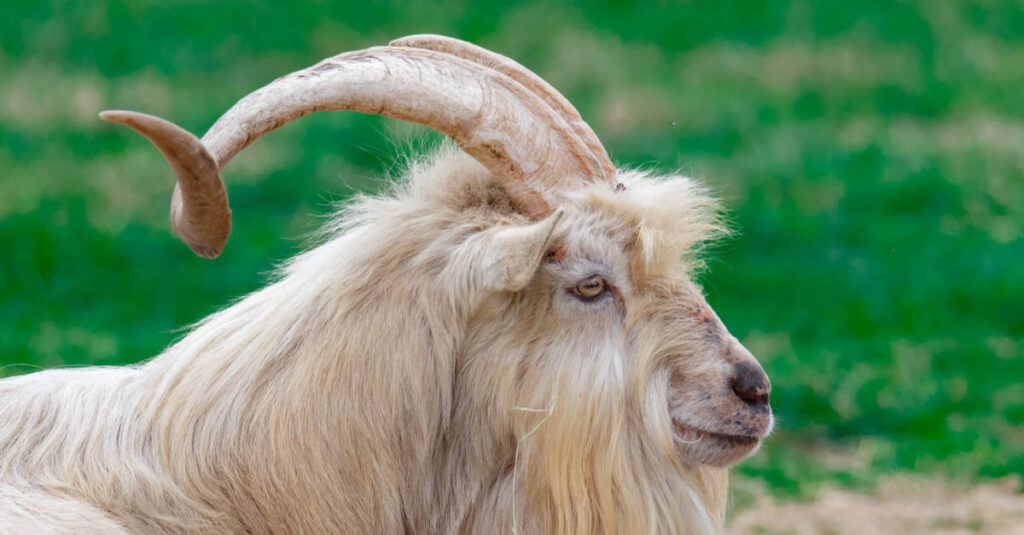
The goat’s wattle is a pair of skin tags covered in hair, its purpose unclear.
©Silent Shoot/Shutterstock.com
In addition to their beards, many goats have wattles. These are fleshy growths much like skin tags that hang from the goat’s neck. They occur in pairs and tend to be covered in hair. Both males and females can grow wattles, though they are more common among some breeds than others. The purpose of wattles is not clear. Scientists speculate that they may be an evolutionary leftover from an unknown, now-defunct organ.
Breeds that frequently produce wattles include Alpine, La Mancha, Oberhasli, Nubian, Saanen, and Toggenburg goats.
6. Not All Goats Have Facial Hair
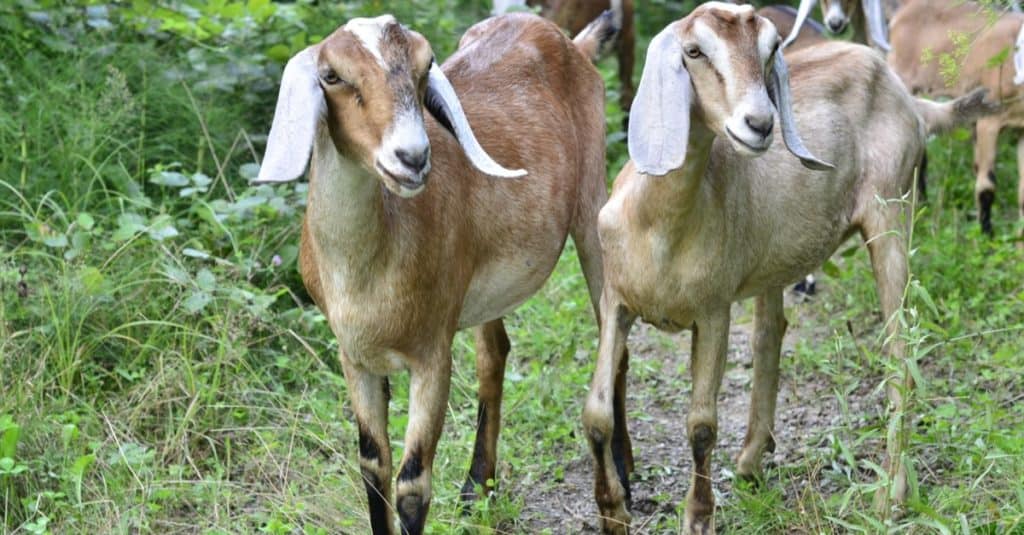
Some goat breeds don’t have beards, like Nubian goats.
©Zhanna Shamrai/Shutterstock.com
Though most goat breeds feature beards, some are less likely to produce them than others. Livestock owners note that Nubian goats in particular, both males and females, are often born without beards.
Certain goat breeds almost exclusively produce individuals with noticeable facial hair. These breeds include Alpine, Toggenburg, Rocky Mountain, LaMancha, and Nigerian dwarf goats. Wild goats of all kinds are likelier to have facial hair than their domesticated cousins.
7. Goat Beards Inspired the Image of a Greek God
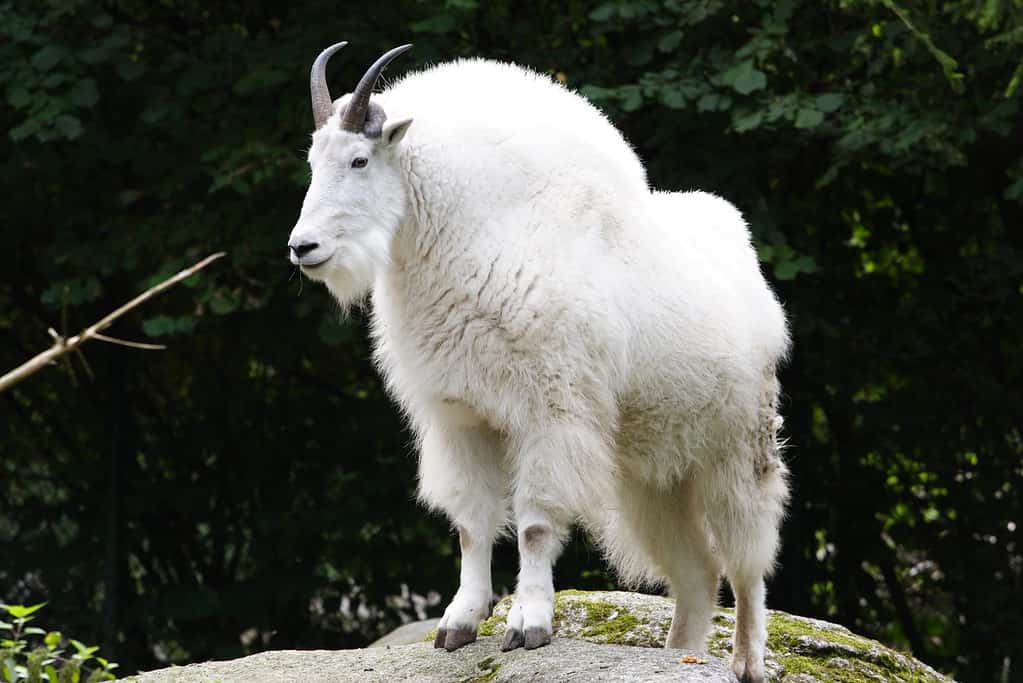
In ancient Greece, goats inspired the image of the Greek god Pan, a half-man, half-goat faun.
©Robert Asenjo/Shutterstock.com
Goats in ancient Greece were so ubiquitous that they inspired the image of a certain Greek god. Pan was a fertility deity who appeared as a faun (half-man, half-goat). Artists usually depict him with a goatish beard and horns as well as cloven hooves. He was wild in nature, associated with shepherds, flocks, and rustic music.
This stylistic influence continues today. One of the most common modern beards is the goatee, a short style restricted to the chin. The original term for it was “goaty,” eventually changing to the current spelling. Either way, goats are the direct inspiration for the goatees of both gods and humans!
8. Pregnancy Triggers Facial Hair Growth in Some Females
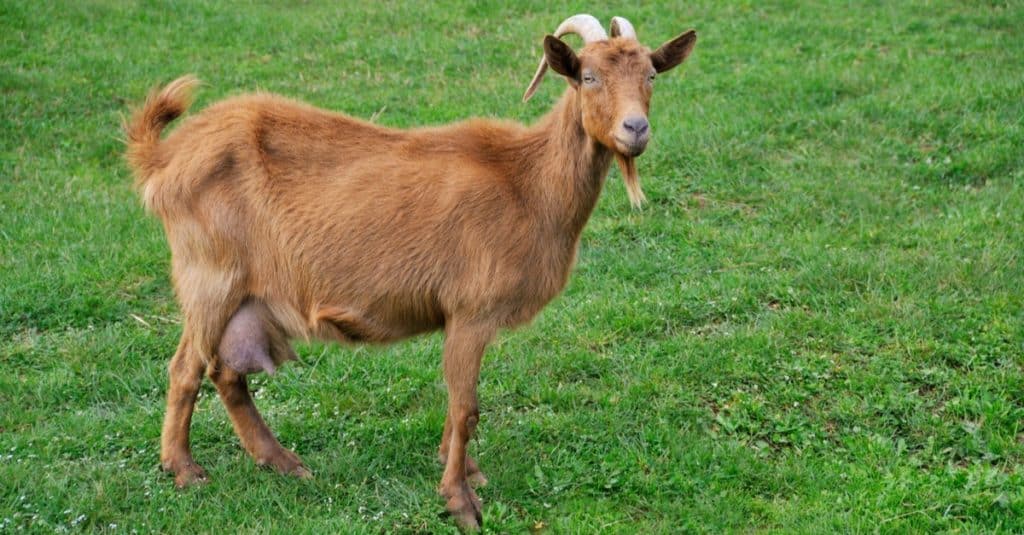
Some female goats grow new beards after their first pregnancy.
©iStock.com/Sevaljevic
Not all female goats have facial hair, and some don’t have them until they become pregnant. Though it’s not a hard-and-fast rule, goat owners have reported new beards on some of their female goats after their first pregnancy. The associated hormones are thought to trigger the growth of facial hair, which may or may not recede once the goat has given birth.
Some goats enter the ring as show animals. Females may have their beards shorn to make them appear more attractive. Owners may also shave them off to maintain cleanliness or prevent them from being caught in fences or gates.
9. Goats Hate Having Their Beards Pulled

While it’s tempting to tug on a goat’s beard, be aware that they hate it!
©Sainuddeen Alanthi/Shutterstock.com
Goats absolutely hate having their beards tugged or pulled. Anybody with facial hair can understand why! Unfortunately for both goats and owners, sometimes it’s necessary to shave it off, and goats obviously can’t give themselves a trim. They may be temporarily mollified or distracted with treats and clickers, but the owner will still have to be quick to get in more than one or two snips.
Goats grow their beards back eventually. Show bucks should never have their chins trimmed as show standards typically require facial hair.
10. No One Knows Why Goats Have Beards
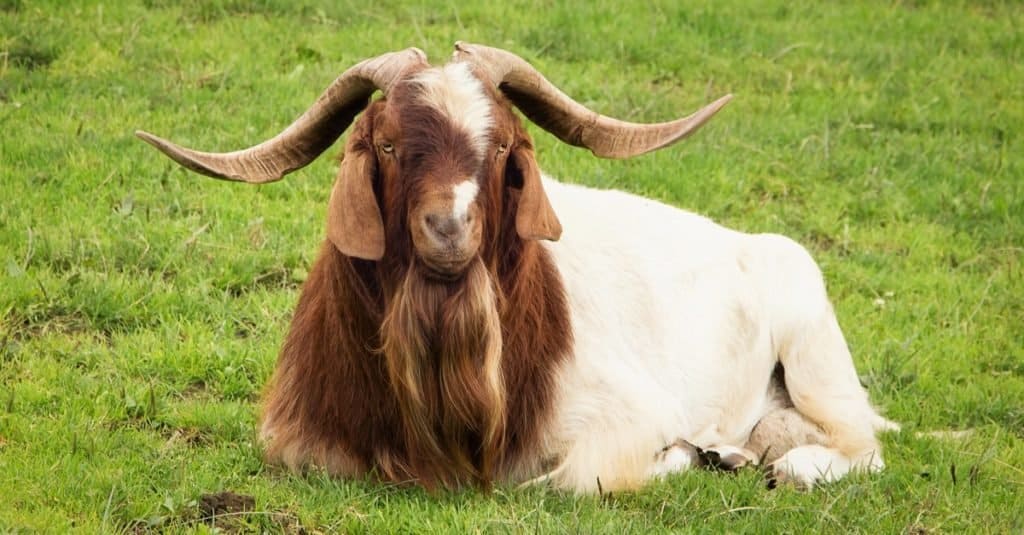
Goat beards don’t serve any obvious purpose, so the reason they grow them is unclear.
©honzik7/Shutterstock.com
So why do goats have beards? The truth is, no one really knows. They don’t serve any obvious purpose. It is possible, of course, that they serve as extra insulation against the cold. Most domesticated goats appear to have descended from the Eurasian wild goat, which features abundant facial growth. This breed is also fond of high altitudes and relatively cold climates. Extra facial hair might be a way of protecting itself in chilly weather.
It’s also possible that this is a sign of strength and virility in males. The ability to produce extra facial hair may signal robust genetics in a buck. This could account for why beards impress does so much. Predators like wolves, bears, and mountain lions may even avoid pursuing goats with heavy beards as they are more likely to be mature males at the apex of their strength.
Whatever its purpose, genetics determine whether or not a goat will have facial hair. The gene is dominant in males and recessive in females. Livestock owners may choose to breed for either bearded or beardless goats depending on their preference. Thankfully, this has no impact on either a goat’s usefulness as livestock or its suitability as a pet.
Thank you for reading! Have some feedback for us? Contact the AZ Animals editorial team.





